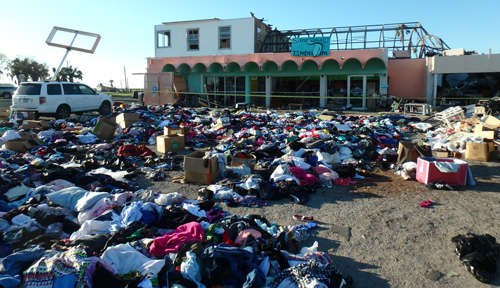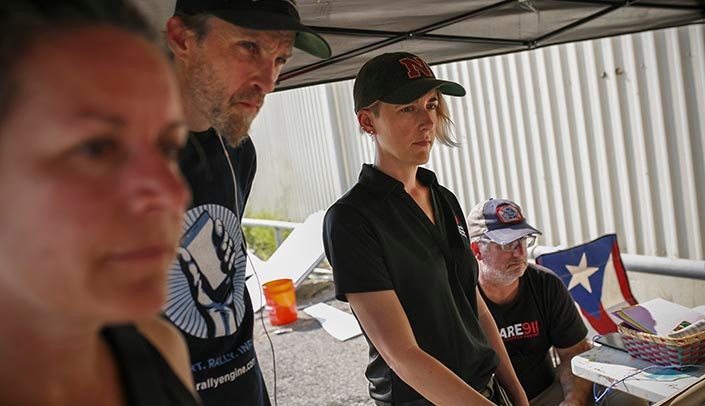To survive a natural disaster is one thing.
But to survive the aftermath is another, especially if you’re in immediate need of medicine and medical care, food, water or clothes.
Where do you go when your house, clinic and pharmacy have been destroyed and the hospital has been evacuated?
That’s what Elayne Saejung and 13 colleagues from the U.S. and Canada found when they were deployed to Rockport, Texas, through an unusual disaster relief organization — Field Innovation Team (FIT), a non-profit organization that creates cutting-edge disaster solutions.
Saejung is assistant director of the Center for Preparedness Education, a joint endeavor with Creighton University School of Medicine; deputy director of training in the National Center for Health Security and Biopreparedness; and finally, instructor of environmental, agricultural & occupational health.
Her mission was supported by Ali S. Khan, M.D., M.P.H., dean of the College of Public Health.
“Our problem was to figure out what was open, what was available and how to get this information out to those who need it most,” Saejung said.
They developed a Public Health Digital Brochure (telephone/Short Message Service hotline) and a donation management system that can be adapted to any community after a disaster.
 |
Donations were piled in a parking lot in Rockport before a donation center was organized by the team. (See sidebar) |
To develop a list of working facilities, the team drove around town every day and updated the information in an online spreadsheet. The data in the online spreadsheet was linked to the telephone/SMS hotline. When the spreadsheet was updated, the automated messaging provided new and correct information via phone or text to those who called.
“It only takes 10-30 minutes to become fully operational for us. A novice could have the information operational within two hours. We named it Recry,” Saejung said. “It is sponsored by UNMC, and the cost for a town under 50,000 people is minimal — $150 a month.”
People called in to hear automated messages on health advisories, medical providers, pharmacy information and mental health providers. To promote the hotline, the local Chamber of Commerce printed information flyers that were posted and handed out.
“We accomplished much in five days and we left our work in the hands of volunteers,” Saejung said. “Rockport was one of the most welcoming communities I’ve ever been in. I would have loved to stay longer.”

Elayne, I think everyone at UNMC is very proud of the work you did.
Elayne, thank you for your service, leadership, and expertise in managing resources in recovery efforts.